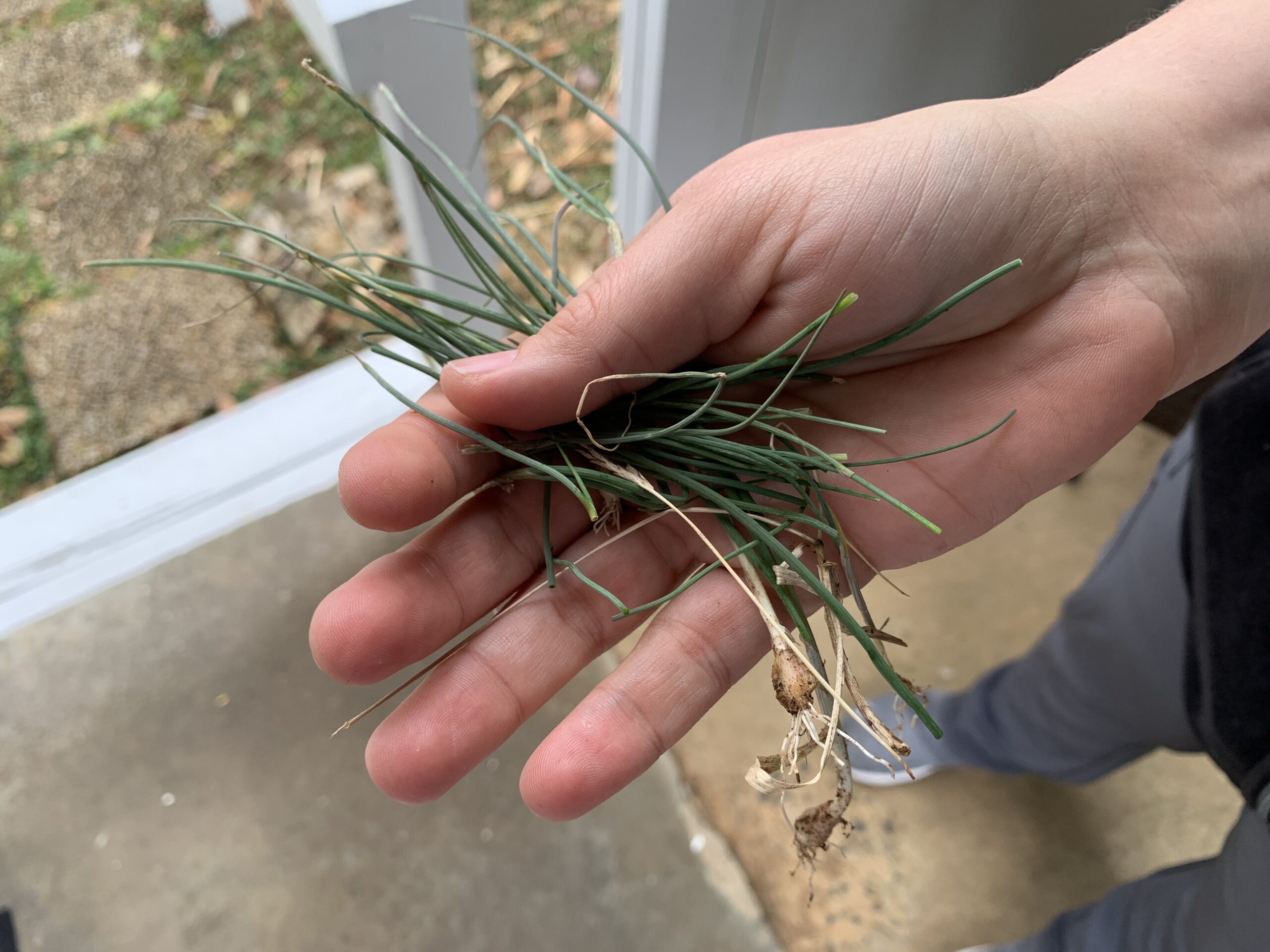When my wife and I moved to Roanoke, Virginia, for a spell, I noticed a peculiar odor lingering in the air after our lawn was freshly mowed. It was an onion or garlic smell.
It was something that I never noticed before at our home in Central Florida and didn’t smell like the freshly mown grass that I had grown up smelling.
This oniony and garlicky grass smell isn’t unique to the grass in Roanoke… I’ve whiffed this garlic or onion scent throughout other parts of the South as well as in the Northeast, particularly when driving by lawns and fields where the grass had just been cut. Perhaps you’ve smelled it after mowing the grass, too.
I’ve never really noticed grass smelling like onions anywhere in Central Florida where my wife and I permanently live, and I think that’s why this oniony or garlicky grass odor really caught my attention. So, I started looking into this, even perusing local gardening and nursery websites to finally track down the source of the onion grass smell. Turns out it’s wild garlic!
How Can You Tell It’s Wild Onion?
That’s what I wanted to know… It was really easy for me to identify wild garlic once I realized the leaves of a wild garlic look pretty much like those of the garlic I buy at the grocery store. Wild onion leaves are round and tubular (tubular, duuuuuuude!). But seriously, they look different than most grass leaves, which are generally flat. Once I knew wild onion leaves are round and tubular, I was easily able to visually pick out the wild garlics from the rest of the grass in the lawn.
When I started looking up wild garlic, I saw a lot of online articles that also mentioned wild onion, which also gives off a pungent odor like wild garlic does. Wild garlic and wild onion can grow side by side in the yard. But how do you tell them apart?
While wild garlic leaves are round and hollow, and they manifest as single, hollow, and a bit branched into leaves, wild garlic leaves are solid and flat, with stems that have a bunching habit and not branched.

Can You Eat Wild Garlic & Wild Onion?
This is where you’ll want to be extra cautious… You see, wild onion and wild garlic are edible plants and can be used in cooking – leaves, bulbs, and roots. But there are some very toxic lookalike plants out there that can cause great harm if you eat them.
So how can you tell wild onion and wild garlic apart from their toxic lookalikes?
I asked Tia Silvasy, a residential horticulture and master gardener volunteer coordinator at the Hillsborough County extension of the University of Florida Institute of Food and Agricultural Sciences (UF/IFAS) about the differences between the edible wild garlic and onions and their toxic lookalikes. “Wild garlic and onions look a lot like grasses and lilies, the key distinguishing feature is when you bruise the leaves they will smell like garlic and onions,” Silvasy says.
Tips For Controlling Wild Garlic & Onions in the Landscape
I really like the smell of wild onion and garlic in the landscape, though I know plenty of people who think the smell is nothing short of putrid. If you think wild onion and garlic are weeds, what do you do? How can you keep wild onion and garlic from growing in your yard?
I asked Silvasy what she recommends for controlling wild garlic and onion. “If you want to control the wild onions and wild garlic without killing the grass, you can dig them up and make sure to get the bulbs. If you opt for chemical control, look for a product containing 2,4-D. That will kill the wild onions and garlic and not the turfgrass.”
